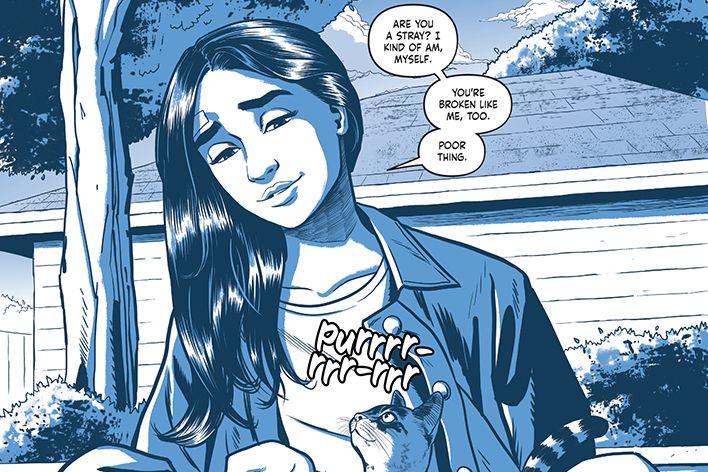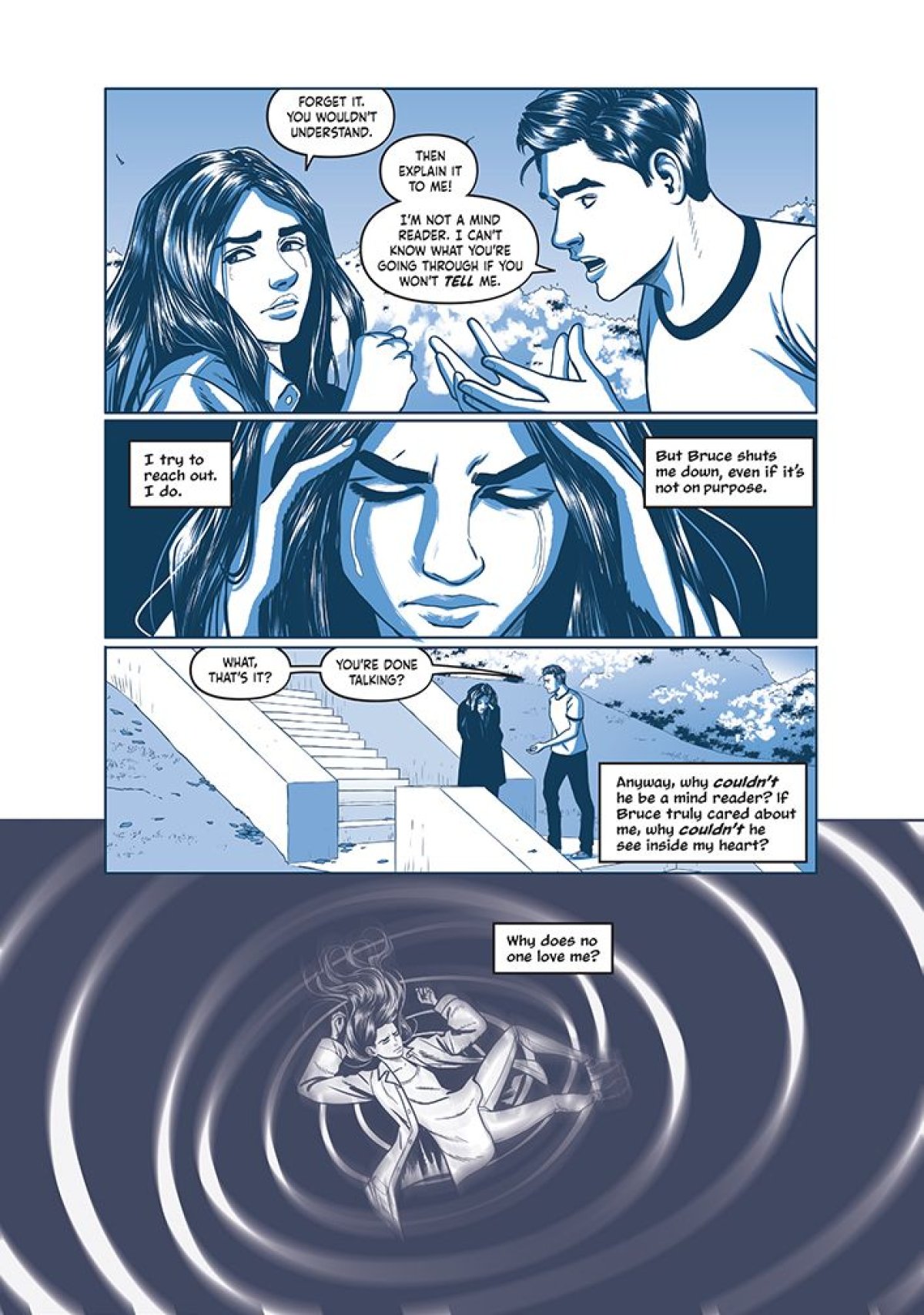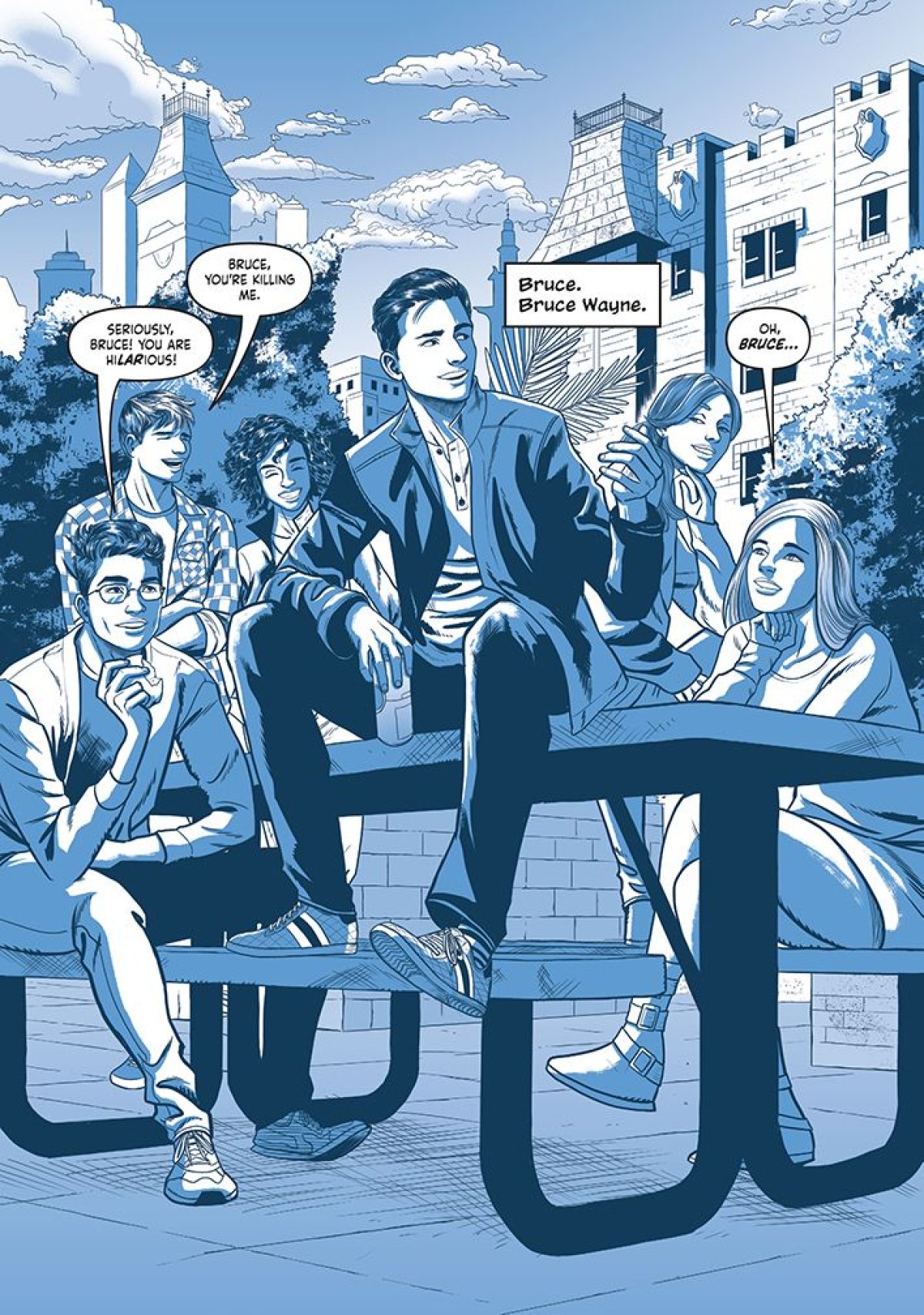
Selina Kyle, also known as the popular DC Comics anti-hero Catwoman, is a name synonymous with confidence and independence. In Under the Moon: A Catwoman Tale, from Lauren Myracle and Isaac Goodhart, Selina is anything but. The 15-year-old Kyle doesn't fight bad guys, she fights the hardships of life while exploring who she is and who she will become.
The second graphic novel in DC Comics' new DC Inks imprint, Under the Moon tells an original story of Selina while tackling heavy issues like homelessness, abuse and self-harm. An ideal read for Mental Health Awareness Month, Under the Moon :A Catwoman Tale is on sale now.
Newsweek had the opportunity to speak with Myracle about Under the Moon, it's heavy subject matter and the world of comics and graphic novels.
Note: This interview has been lightly edited for clarity and length.
You're well known for your prose stories and now you're making the jump to the graphic novel/comic world. Was there preparation?
I did do a lot of preparation and research. It's not just a move from prose to graphic novels it's a new culture. You go from the young adult publishing to a world of comic book publishing and working with DC Comics. There were so many things I learned along the way, but in terms of the writing, it's crazy hard. I guess I always have that mentality of "you give me a challenge I'm going to rise to the occasion."
So I read as many comics and graphic novels as I could. DC set me up with some fabulously good trainers. Some of the first pages of the scripts I sent in to my editors they came back like "you cannot have 15 panels on a page. You can't have them talking this much." So I had to streamline my own writing and it made me a better writer.
The other part of it that was cool was I could be wordy in the panel description, not that I had to worry about that, but it was a message to [artist Isaac Goodhardt.] And when you look at the dialogue, I always thought dialogue was my strength and setting is not. So it's great to have Isaac for that.
I've written books that are only dialogue. Like my messaging books that are just girls talking. So I thought "I got this." But when we got the proof and saw the amazing, transformative art. I could see that my dialogue was already tight so I could just cut since it wasn't necessary because the story is being told in visual form.
How is your working relationship with Isaac?
If you can't tell, I like the guy an awful lot [laughs]. Not only is he extremely talented, he was collaborative in every sense of the word. And I wanted to be, too. I want the work to come first and to be the best it can be.
Emerging writers forget that the editors are there to help. Once you find a good editor you say "yes tell me how to make it better." But I had the same attitude with Isaac where he would say, "alright this is fantastic, but Selina looks like she is in her 20s." And I went back and an hour later I would say "yea you're right." So working together weekly with illustrators and writers really compliment each other. I felt that with Under the Moon. The editors were the conduit, they would talk to me, talk to Isaac they would report to both of us. And at some point we were both like "this is unnecessarily cumbersome and on the talkative side." And we were just put under one big email and then Isaac and I started our own chat where we could talk privately and it was so fun. He made it so fun.
I feel really lucky. His dream was to work for DC and he was saying "I can't believe I get to draw Bruce Wayne and Selina Kyle" and I was thrilled and honored too, but I'm not the "comic book geek" that he is. I think he adds legitimacy to the project and I feel that's important to the comic book crowd. He knows Gotham City inside and out, he added little Easter Eggs all over the place and I never caught them and seeing them I thought "that is so cool." That's just another layer that he brought.
Would you say he made you a better graphic novel writer?
[Laughs] Oh gosh yes. Graphic novels and comic books are his passion and his first love and he would answer all my stupid questions that I was too embarrassed to articulate to the editors. And he did it with such generosity. Yea, I can't imagine writing another graphic novel with anyone but Isaac for the rest of my life.
Under the Moon's story has a lot of heavy issues. Abandonment, homelessness, abuse. How did you pitch the story to DC Comics?
Since the novel has come out, while people have reacted positively people often go "no, we don't like that. Close your eyes, look away, look away." And when we first started, I wrote the outline and I maintained that the story comes first and not worry about the fears, or how people may react to it.
The thing about Selina Kyle is she's this kid. She's 15 and she's not yet an adult. And in the beginning of the story she's gotten in over her head into situations where it's hard to wrap her head around them. Yet we know from general lore she's going to be fiercely independent, shy and screw up her relationships. And yet she finds her own morality. In my story she's living a life on these streets as a street kid and you don't go from playing with My Little Ponies to becoming a renegade, homeless girl who fights murderers. So it has to be dark, right? The darkness, the grittiness of Gotham City, of real life for so many kids that informs Selina becoming the resilient, tough, and yes, a wounded and scarred young woman that she is. DC never blinked an eye and I was so appreciative of that. And I often thought this is a comic book, it's supposed to be big and if I'm going to tell a story I'm going to tell a story. I'm not going to hold back.

You've spoke about how your past experiences helped mold the story of Under the Moon. Do you feel it was cathartic to write it?
Yea it is a catharsis. When I'm writing, I'm thinking very much about my readers and myself when I was that age. And that part of me is still very much alive, and I think it is for other people too, but they learned to mask it with clothes or makeup. My goal is to tell my readers in a story form that you're not alone. You're ok. These things that are your secrets that make you feel ashamed, the things that make you wonder if you're different or broken. The things that aren't supposed to happen to you as a kid like having a bully like Dernell, Selena's mom's boyfriend, who makes her feel like crap.
It's hard to be human. It's hard to navigate your emotions and I struggle with that for sure. For example, Selina she turns to self-harm when she loses Cinder and it's because she's at such a loss that she doesn't know what to do. And kids in this world really don't, so some turn to self-harm. That's something I've struggled with myself and seen two of my kids struggle with and I think it scares people. Yea it's an outward scar and an inward pain but it happened. And just because it happened doesn't mean it defines you for the rest of your life. You move on and you heal. So is it cathartic? Yes because I'm saying "you guys are ok, I love you people and you are going to rise to the occasion." and I feel they take that away. Books change people.
What about those readers who don't have that direct connection what do you hope they get from Under the Moon?
Books are all about empathy. And we see it through other forms of storytelling as well. Imagine the kid who, and I'm being silly here, only has polo classes and expensive things. You don't learn from isolation. Reading a book is a window to another world and a window into empathy. Humans are wired for connection, and that's the best way to put yourself into someone else's shoes. The shortcut of life is building these pre-conceptions, and [learning you] don't talk about certain things. But a book makes you say, "oh, this person has dreams, and what if they were me? Or what if I was a Bruce Wayne, would I reach out and help her? Or am I the bully? Is that a good way to go through life? Does that really lead to happiness?"
So yes, for the readers who haven't had direct experiences, it's voyeuristic. I say that meaning it's entertainment. There's a sense of being fascinated by this when you go into a story and it's beautifully translated into empathy.
A big part of the story is showing all the coping mechanisms the characters utilize. How important was it to show that?
Yea, some [coping mechanisms] work, and some don't work. And others may not work at the time, and then you realize that was dumb. Selina cuts herself in a period when she feels that she has no other recourse. There's these huge emotions inside of her.
But as the story goes on— and stories are never static, which is true with our lives as well—she meets Rosie, who went through worse than what Selina went through. Rosie notices Selina's scars and runs her fingers over them, and Selina has this moment of "whoa, if Rosie looks up to me and I'm the grown up who is taking care of her unlike any grown up has taken care of me. If she thinks I'm endorsing that, then I'm not doing Rosie any favors."
There's a moment that I love, and it's illustrated so beautifully when Selina says, "Rosie, what I did was stupid. It's uncool and didn't make me feel any better. Don't do this. And if you need me or [need to] talk, I'll be here." That idea ... that pain through words or actions or looks can make you feel so isolated that you end up putting knife to your own skin.
There was a part in the story that got me choked up. Bruce and Selina are talking, and her inner monologue reveal's she's upset that he can't read minds and doesn't understand what's going on.
Yes! That's one of the few moments the editors said "this is too much. This is melodramatic." That's when she's falling into a spiral of despair and it's illustrated that way [laughs]. I said, "do you remember what it's like to be a teenager? You don't have 40 years of experience. Everything is new, everything is heightened and you go into a spiral of despair." And Isaac jumped right in and said, "yea we are keeping this one." And they did!
And here you are telling me that it choked you up a little bit and it did for me too. Even with a crush, not talking about homelessness, abuse or murders. What happens when two people try to reach each other and they don't know if the other person is going to be receptive and that's so friggin' real for teens every single day of their lives.

Constructing iconics characters like Selina and Bruce, did you feel any fear about getting their characters right?
Yea [laughs] there is a fear. I'm on tour right now, which is exciting. As a prose writer, I'm used to visiting book stores. I don't know what it's going to be like going to a comic book store. I'm excited to do it. There will be some people who embrace it, and there will be others who say "you took my favorite character and made her homeless!" or whatever [laughs]. I've developed a thick skin over the years, but I think I'll be able to tell people that I'm trying to give them another aspect of Selina, with so many stories with so many different Selinas. And DC made me feel that way, they've been amazing to work with. It's like entering into a pool, I'm going to dip my toe in and see how the water treats me [laughs].
Anything from your first draf that was cut or not included?
[Laughs] I'll say this. In the comic book world, Bruce is a straight arrow and a kind of a boy scout and I originally didn't think of him that way. So when I was coming up with the characters and their backstories, I'm imagining a 17-year-old guy. Some 17-year-old guys are boy scouts but they usually are not also hot, brooding and sexy as heck. My mindset was more of a teen boy, in the way that I see my 18 year-old son and my 20-year-old son. It worked beautifully because DC said he could be all those things, but he has to be true to the core aspect of Bruce. He has this honor code of behavior that we need to respect. So Bruce as a more kind of rough-talking bad boy, that went away. I learned bad language doesn't really add anything to the story, and when I remembered that I was like "yea, Bruce Wayne doesn't need to curse."
Bruce Wayne is often portrayed as the "playboy." And while he has women fawning over him in Under the Moon, he's not that here. You definitely played him straight.
Yea, I never really thought about it that way. The girls are fawning over him but he's just doing his thing. He has his buddies.
Alright, Selina has her "why can't he see into my head?!" and the thing I love about Bruce is when he's telling Selina about the death of his parents, and that gorgeous isolated drawing of Bruce in the cemetery, and you can see people around him like Alfred ... he feels completely isolated. He's wounded just like Selina is. Maybe it doesn't show on the outside, just because Bruce looks perfect on the outside. He's still human, he still hurts, and is still healing his own wounds as well.

Would you like to continue the story of Selina in another novel?
Oh my god! Yes I would. That would be me and Isaac's dream. We had them all written in our heads. We'll just wait and see.
Uncommon Knowledge
Newsweek is committed to challenging conventional wisdom and finding connections in the search for common ground.
Newsweek is committed to challenging conventional wisdom and finding connections in the search for common ground.
About the writer
Phillip Martinez is a game and culture reporter for Newsweek. Prior to joining Newsweek in 2018, he was a reporter ... Read more
To read how Newsweek uses AI as a newsroom tool, Click here.








